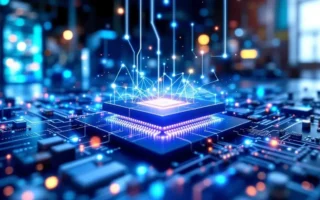NASA Fast-Tracks Lunar Nuclear Reactor for 2030 Launch
Introduction to NASA’s Lunar Nuclear Reactor Plans
NASA’s Artemis program is ambitiously aiming to establish a sustained human presence on the Moon, marking a new era of lunar exploration and colonization. Central to this vision is the deployment of reliable, continuous power systems capable of supporting habitats, scientific instruments, and resource extraction activities on the lunar surface. Recognizing the limitations of solar power and batteries for long-term missions, NASA has prioritized nuclear energy-specifically developing a compact, high-output nuclear fission reactor-to provide steady power regardless of lunar night cycles or extreme environmental conditions.
This initiative takes place against a dynamic geopolitical backdrop. Space-faring nations such as China and Russia are rapidly advancing their own lunar projects, including nuclear power systems, fueling a competitive space race that underscores the strategic importance of securing energy autonomy on the Moon. NASA’s fast-tracked lunar nuclear reactor project is thus not only a technological endeavor but also a critical component of U.S. space policy designed to maintain leadership in space exploration and lunar colonization efforts.

Recent Developments and Timeline (2024-2025)
In August 2025, NASA released a pivotal draft solicitation under the Fission Surface Power (FSP) program called the Announcement for Partnership Proposals (AFPP). This marks a strategic shift in procurement: NASA will purchase the power generated by the lunar nuclear reactor rather than the reactor hardware itself. This innovative approach encourages commercial entities to develop and operate the reactors, fostering a lunar base power systems market that could extend beyond NASA’s immediate needs.
The timeline NASA has set is ambitious-a fully operational lunar nuclear reactor delivering approximately 100 kilowatts of continuous power is targeted for deployment by 2030. While some industry experts describe this as “racy but achievable,” others remain skeptical due to the significant technical, logistical, and financial challenges involved. NASA’s strategy also includes engaging commercial partners through Space Act Agreements, requiring detailed proposals that demonstrate technical feasibility and long-term financial sustainability, reflecting a move toward commercialization and market-driven space nuclear power solutions.
Technical Specifications of the Lunar Nuclear Reactor
The planned lunar nuclear reactor is designed to be compact and robust, tailored specifically for the challenging lunar environment. Key design features include a modular architecture to facilitate transport and assembly on the Moon, radiation shielding to protect both equipment and personnel, and autonomous operation capabilities to minimize human intervention.
With an expected continuous power output of around 100 kilowatts, this reactor will provide sufficient energy to support a wide range of lunar base power systems. These include life support for habitats, scientific research instruments, and critical in-situ resource utilization (ISRU) processes such as mining and processing lunar regolith to produce water, oxygen, and fuel. This level of power output represents a significant advancement over current solar and battery technologies and is essential for enabling long-term space missions and sustainable lunar colonization.
Challenges Facing the Development of Lunar Nuclear Reactors
Deploying a nuclear reactor on the Moon presents formidable technical challenges. One of the primary hurdles is ensuring the reliability and safety of the reactor’s operation in the harsh and remote lunar environment, including extreme temperature fluctuations, radiation exposure, and abrasive lunar dust.
Additionally, the absence of a proven, reliable lunar landing system capable of safely delivering such a sensitive and heavy payload complicates mission planning. The complexity of remotely assembling and operating a nuclear fission reactor with minimal human oversight adds another layer of difficulty. These obstacles have led some experts to caution that meeting the 2030 timeline may be overly optimistic, warning that rushing development could risk safety or mission success. Nevertheless, NASA is committed to overcoming these challenges through intensive research, testing, and innovative engineering solutions.
Geopolitical Implications of Lunar Nuclear Power
The lunar nuclear reactor project has significant geopolitical ramifications. The United States is in a strategic competition with China and Russia, both of whom are advancing their own lunar nuclear power initiatives. China’s Chang’e program and Russia’s lunar ambitions include developing nuclear fission reactors to power their lunar bases, underscoring the global stakes involved in space energy infrastructure.
Securing a dependable nuclear power source on the Moon is not only about enabling science and exploration; it is a matter of national security and technological leadership. Control over lunar power resources could influence future space colonization efforts, international collaboration frameworks, and space policy negotiations. Consequently, NASA’s accelerated timeline reflects the urgency to maintain a competitive edge and shape the rules of engagement in an evolving space race.
The Role of Commercial Partnerships in Lunar Nuclear Development
Recognizing the limitations of government-only programs, NASA has embraced commercial partnerships as a cornerstone of its lunar nuclear reactor strategy. Through mechanisms like Space Act Agreements and the AFPP, NASA incentivizes private companies to invest in developing, deploying, and operating lunar nuclear power systems.
This market-driven approach aims to cultivate a vibrant lunar power ecosystem where commercial entities can provide electricity not only to NASA but also to other customers, including international partners and commercial lunar ventures. Such a model supports NASA’s long-term vision of lunar industrialization, where energy infrastructure forms the backbone of sustainable economic activities on the Moon.
Expert Opinions on the Future of Nuclear Power in Space Exploration
Prominent experts, including astrophysicist Neil deGrasse Tyson, emphasize the necessity of nuclear power for ambitious space missions. Tyson and others argue that the intermittent nature of solar energy and the immense energy demands of long-term habitats make nuclear reactors indispensable for lunar and deep space exploration.
While there is broad consensus on nuclear energy’s strategic importance, experts caution against the risks of political pressures driving overly aggressive timelines. They advocate for measured progress that prioritizes safety, reliability, and technological maturity to ensure mission success and public trust. The debate underscores the balance NASA must strike between ambition and pragmatism.
Comparative Analysis: International Efforts in Lunar Nuclear Technology
NASA’s lunar nuclear mission is part of a broader international movement toward deploying nuclear power on the Moon. European organizations, such as Italy’s ENEA and Thales Alenia Space Italy, are developing projects like Selene, which focus on lunar nuclear fission technology for base power systems.
China and Russia are particularly noteworthy competitors, with joint lunar nuclear projects aimed at powering their lunar bases and exploration equipment. These efforts highlight differing approaches and timelines but collectively underscore a shift toward nuclear energy as a foundational technology for space colonization.
This global competition fosters innovation but also raises questions about international cooperation, regulatory frameworks, and the peaceful use of space nuclear technologies, all of which will shape the future of lunar exploration.
Multimedia Resources for Further Engagement
- NASA Fission Surface Power Program – Official updates and project details
- Explainer Video: How Lunar Nuclear Reactors Work – Visual breakdown of reactor technology and lunar applications
- Lunar Nuclear Reactor Timeline and Specifications Infographic – Detailed visual timeline from project inception to 2030 launch
Conclusion
NASA’s fast-tracked lunar nuclear reactor program represents a critical leap forward in space exploration technology, aiming to deliver a 100-kilowatt fission reactor on the Moon by 2030. This initiative addresses the urgent need for reliable, continuous power to support long-term space missions and lunar base power systems, essential for life support, scientific research, and in-situ resource utilization.

The project’s innovative procurement strategy involving commercial partnerships aims to create a sustainable lunar power market, aligning with NASA’s broader vision of lunar industrialization. However, significant technical and logistical challenges remain, alongside intense geopolitical competition from China, Russia, and Europe. The outcome of this endeavor will not only influence the future of space nuclear energy but also the strategic dynamics of international space exploration.
As interest and investment in nuclear energy for space exploration grow, staying informed through credible sources and expert analyses will be vital. NASA’s lunar nuclear reactor project stands at the nexus of technology, geopolitics, and commercial innovation-heralding a new chapter in humanity’s journey to the Moon and beyond.


